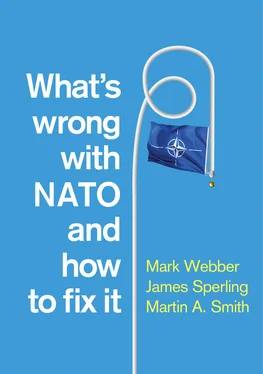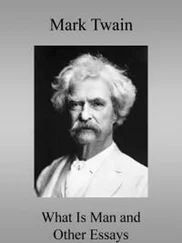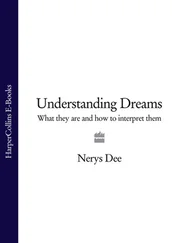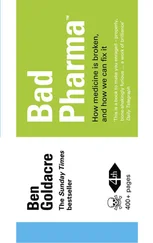The approach we take in the remainder of this book, then, is informed by a generally sympathetic view of NATO. We regard the Alliance as indispensable to European and transatlantic security. The international security order would be much worse off if NATO were to systematically fail or to exit global affairs. But while NATO has its virtues, it is also in need of reform. The Alliance has not been resistant to change, and there is a cottage industry of academic and think-tank opinion dedicated to changing it for the better. 35This does not make our study unnecessary. NATO’s importance requires that it be a subject of ongoing scrutiny, and that studies such as ours take on board contemporary challenges and political circumstances. We write this book as major changes impact the international system: the legacy of a Trump presidency that renounced many of the principles of multilateralism; a China and Russia that are pushing back against American claims to global leadership; and a worldwide pandemic that undermines the benefits of global interconnectedness. NATO is, in some ways, touched by all of these global shifts. But to appraise the Alliance, we have focused on a set of problems for which its members are directly responsible and over which, therefore, they can exert some influence. Some of these problems we have already encountered in this chapter. The four we have chosen to structure the book around are significant because they go to the heart of how NATO conducts its affairs and how the Alliance relates to its security and political environment. Tackling them will make a profound difference to NATO’s fortunes. They can be summarized as follows:
task proliferation (the pitfalls of doing too much);
over-reliance on American leadership and a failure of European responsibility;
limits on resources and an inability to obtain an effective allocation of defence capabilities;
a divisive and dangerous relationship with Russia.
We cannot ‘cure’ NATO – like every organization, it will always be found wanting in some way. But we can recommend treatment. The fixes to its problems we see as follows:
doing less but better (task discretion);
rebalancing the responsibilities of leadership toward Europe;
aligning missions with effective and efficiently allocated capabilities;
constructing a realistic partnership with Russia.
Our purpose, then, is clear: to lead NATO toward a healthy recuperation. In this spirit, the book concludes with a summary of how the Alliance ought to prioritize its efforts and so ensure that it remains fit for purpose in the years to come.
1 1. Christian Whiton, ‘NATO Is Obsolete’, The National Interest, 6 July 2018, https://nationalinterest.org/feature/nato-obsolete-25167.
2 2. Mary Dejevsky, ‘Donald Trump Is Right about One Thing: NATO Is Obsolete’, The Independent, 7 April 2016, https://www.independent.co.uk/voices/donald-trump-right-about-one-thing-nato-obsolete-a6973231.html.
3 3. Interviewed in The Economist, 7 November 2019, https://www.economist.com/europe/2019/11/07/emmanuel-macron-warns-europe-nato-is-becoming-brain-dead.
4 4. Jochen Bittner, ‘Does NATO Still Exist?’, New York Times, 7 July 2016, https://www.nytimes.com/2016/07/08/opinion/does-nato-still-exist.html.
5 5. Jonathan Clarke, ‘Replacing NATO’, Foreign Policy, No. 93, 1993–4, pp. 22–40.
6 6. ‘The Future of NATO: NATO Flexes Its Muscle Memory’, The Economist, 30 August 2014, https://www.economist.com/international/2014/08/30/nato-flexes-its-muscle-memory.
7 7. Ian Bremmer, ‘The Hollow Alliance’, Time, 27 June 2016, https://time.com/4371195/nato-transatlantic-alliance-us-europe/.
8 8. Elizabeth Pond, Friendly Fire: The Near-Death of the Transatlantic Alliance (Washington, DC: Brookings Institution Press, 2004).
9 9. Cited in Thom Shanker and Steven Erlanger, ‘Blunt US Warning Reveals Deep Strains in NATO’, New York Times, 10 June 2011, http://www.nytimes.com/2011/06/11/world/europe/11nato.html.
10 10. Jens Ringsmose and Mark Webber, ‘No Time to Hedge? Articulating a European Pillar within the Alliance’, NATO Defence College, Policy Brief, No. 5, 2020, http://www.ndc.nato.int/news/news.php?icode=1423.
11 11. ‘Çavuşoglu: Turkey Will Consider Exit from NATO’, Katehon, 10 August 2016, https://katehon.com/news/cavusoglu-turkey-will-consider-exit-nato.
12 12. BBC News, 7 May 2019, https://www.bbc.co.uk/news/av/world-europe-48189096/iceland-s-green-pm-jakobsdttir-on-nato-membership.
13 13. Roger Cohen, ‘Anti-Semitic Anti-Zionism’, New York Times, 18 October 2016, https://www.nytimes.com/2016/10/19/opinion/anti-semitic-anti-zionism.html.
14 14. Ted Galen Carpenter, ‘NATO Is an Institutional Dinosaur’, War on the Rocks, 25 August 2016, https://warontherocks.com/2016/08/nato-is-an-institutional-dinosaur/.
15 15. Wallace J. Thies, Why NATO Endures (Cambridge etc.: Cambridge University Press, 2009), p. 296.
16 16. Kori Schake, ‘NATO after the Cold War, 1991–1995: Institutional Competition and the Collapse of the French Alternative’, Contemporary European History, 7(3), 1998, p. 381.
17 17. Carl Cavanagh Hodge, ‘Full Circle: Two Decades of NATO Intervention’, Journal of Transatlantic Studies, 11(4), 2013, pp. 350–67.
18 18. James Sperling, ‘Introduction: A Stable Crisis? NATO into the Twenty-First Century’, in James Sperling and S. Victor Papacosma (eds), NATO after Sixty Years: A Stable Crisis (Kent, OH: The Kent State University Press, 2012), p. 1.
19 19. Celeste A. Wallander, ‘Institutional Assets and Adaptability: NATO after the Cold War’, International Organization, 54(4), 2000, pp. 705–35.
20 20. Seth A. Johnston, How NATO Adapts: Strategy and Organization in the Atlantic Alliance since 1950 (Baltimore: Johns Hopkins University Press, 2017), pp. 118–75.
21 21. Brian C. Rathbun, Trust in International Cooperation: International Security Institutions, Domestic Politics and American Multilateralism (Cambridge etc.: Cambridge University Press, 2011), pp. 1–23, 163–208.
22 22. This idea was conceived originally by Karl Deutsch and colleagues in Political Community in the North Atlantic Area (Princeton: Princeton University Press, 1957), which is the source of the quotation (p. 5).
23 23. Patricia A. Weitsman, Waging War: Alliances, Coalitions, and Institutions of Interstate Violence (Stanford: Stanford University Press, 2014), p. 190.
24 24. We borrow here from Kenneth W. Abbott, Jessica F. Green and Robert O. Keohane, ‘Organizational Ecology and Institutional Change in Global Governance’, International Organization, 70(2), 2016, pp. 247–77.
25 25. Munich Security Conference Report 2020: Westlessness, https://securityconference.org/assets/user_upload/MunichSecurityReport2020.pdf.
26 26. Vincent Pouliot, International Pecking Orders: The Politics and Practice of Multilateral Diplomacy (Cambridge etc.: Cambridge University Press, 2016), pp. 86–116.
27 27. Jamie Shea, ‘NATO at Full Stretch’, International Politics Reviews, 4, 2016, pp. 36–42.
28 28. John J. Mearsheimer, ‘The False Promise of International Institutions’, International Security, 19(3), 1994/1995, p. 7.
29 29. Michael N. Barnett and Martha Finnemore, ‘The Politics, Power, and Pathologies of International Organizations’, International Organization, 53(4), 1999, pp. 699–700.
30 30. Robert O. Keohane and Lisa L. Martin, ‘The Promise of Institutionalist Theory’, International Security, 20(1), 1995, pp. 39–51.
31 31. Ivan Krastev and Stephen Holmes, The Light that Failed: A Reckoning (London: Allen Lane, 2019); Stephen Walt, ‘The Global Order after COVID-19’, Institute for Security Policy, Vienna, Working Paper, 2020.
Читать дальше












